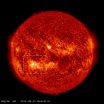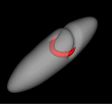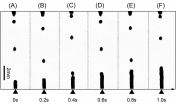(Press-News.org) On Sept. 30, 2014, a sounding rocket will fly up into the sky – past Earth's atmosphere that obscures certain wavelengths of light from the sun -- for a 15-minute journey to study what heats up the sun's atmosphere. This is the fourth flight for the Very high Angular Resolution Ultraviolet Telescope, or VAULT, will launch from the White Sands Missile Range near Las Cruces, New Mexico.
The instrument, now called VAULT2.0, has been refurbished with new electronics and an imaging detector to capture images more frequently than before. While in space, VAULT2.0 will observe light emitted from hydrogen atoms at temperatures of 18,000 to 180,000 degrees Fahrenheit.
"That's the temperature range where the action is," said Angelos Vourlidas, the principal investigator for VAULT2.0 at the Naval Research Laboratory in Washington, D.C. "These are the temperatures where the heating of the sun's atmosphere – the corona -- really takes place."
Understanding how the corona heats remains one of the great, unanswered questions on the sun. The solar surface itself is only about 10,500 F, but further up in the atmosphere, the temperatures rise to million of degrees Fahrenheit – the opposite of what one typically expects when moving away from a heat source. Something heats up that corona, and VAULT2.0 will be watching.
The sounding rocket will fly up to about 180 miles in the air, just below the height where the International Space Station travels. It will fly in an arc, taking 15 minutes from launch to landing back on the ground. This allows for just six minutes of actual observations while it is above the atmosphere, during which VAULT2.0 will capture an image every six to eight seconds. Vourlidas plans to focus the telescope on active regions at the center of the sun – areas of intense and complex magnetic activity, to understand the heating process there.
During the VAULT2.0 launch, three other observatories will watch the same area: NASA's Interface Region Imaging Spectrograph, or IRIS, the joint Japanese Exploration Agency and NASA's Hinode, and NASA's Solar Dynamics Observatory, or SDO. IRIS focuses in on solar material slightly hotter than does VAULT2.0, while Hinode can see solar material both cooler and much hotter. The temperatures also loosely correlate to heights in the atmosphere with the cooler temperatures at the bottom, and the hotter temperatures higher up. SDO will observe the larger scale structure of the solar atmosphere as well as the underlying magnetic field.
"Together the three telescopes will be looking at a sandwich of solar material," said Vourlidas. "We'll be looking at the layers from near the surface all the way up into the corona, the layers where the bulk of coronal heating is believed to happen."
VAULT's launch time is planned for 1:47 p.m. EDT on Sept. 30. Launch timing will depend on good weather conditions as well as optimum times for coordinating with Hinode satellite and IRIS spacecraft.
VAULT is supported through NASA's Sounding Rocket Program at the Goddard Space Flight Center's Wallops Flight Facility in Virginia. NASA's Heliophysics Division manages the sounding rocket program.
INFORMATION:
For more information about NASA's sounding rocket program, visit:
http://www.nasa.gov/mission_pages/sounding-rockets
NASA-funded rocket has 6 minutes to study solar heating
2014-09-30
ELSE PRESS RELEASES FROM THIS DATE:
Deceptive-looking vortex line in superfluid led to twice-mistaken identity
2014-09-30
So long, solitons: University of Chicago physicists have shown that a group of scientists were incorrect when they concluded that a mysterious effect found in superfluids indicated the presence of solitons—exotic, solitary waves. Instead, they explain, the result was due to more pedestrian, whirlpool-like structures in the fluid. They published their explanation in the Sept. 19 issue of Physical Review Letters.
The debate began in July 2013, when a group of scientists from the Massachusetts Institute of Technology published results in Nature showing a long-lived structure ...
New discovery approach accelerates identification of potential cancer treatments
2014-09-30
ANN ARBOR—Researchers at the University of Michigan have described a new approach to discovering potential cancer treatments that requires a fraction of the time needed for more traditional methods.
They used the platform to identify a novel antibody that is undergoing further investigation as a potential treatment for breast, ovarian and other cancers.
In research published online in the Proceedings of the National Academy of Sciences, researchers in the lab of Stephen Weiss at the U-M Life Sciences Institute detail an approach that replicates the native environment ...
Gene doubling shapes the world: Instant speciation, biodiversity, and the root of our existence
2014-09-30
What do seedless watermelon, salmon, and strawberries all have in common? Unlike most eukaryotic multicellular organisms that have two sets of chromosomes and are diploid, these organisms are all polyploid, meaning they have three or more sets of chromosomes—seedless watermelon and salmon have 3 and 4 sets of chromosomes, respectively, and strawberries have 10! While this might seem surprising, in fact most plant species are polyploid. Polyploidy, or genome doubling, was first discovered over a century ago, but only recently, with the development of molecular tools, has ...
Smithsonian scientists discover coral's best defender against an army of sea stars
2014-09-30
Coral reefs face a suite of perilous threats in today's ocean. From overfishing and pollution to coastal development and climate change, fragile coral ecosystems are disappearing at unprecedented rates around the world. Despite this trend, some species of corals surrounding the island of Moorea in French Polynesia have a natural protector in their tropical environment: coral guard-crabs. New research from the National Museum of Natural History's Smithsonian Marine Station scientist Seabird McKeon and the museum's predoctoral fellow Jenna Moore of the Florida Museum of Natural ...
Asthma symptoms kicking up? Check your exposure to air pollution
2014-09-30
ARLINGTON HEIGHTS, Ill. (September 30, 2014) – People who suffer from asthma may think there's not a lot they can do to control their asthma besides properly taking medications and avoiding allergic triggers.
According to a new article in the Annals of Allergy, Asthma and Immunology, the scientific publication of the American College of Allergy, Asthma and Immunology (ACAAI), asthma sufferers can learn lessons about managing their asthma by examining their lifestyle. The woman described in the Annals article improved her asthma once she and her doctor determined her ...
High-dose vitamin D for ICU patients who are vitamin D deficient does not improve outcomes
2014-09-30
Administration of high-dose vitamin D3 compared with placebo did not reduce hospital length of stay, intensive care unit (ICU) length of stay, hospital mortality, or the risk of death at 6 months among patients with vitamin D deficiency who were critically ill, according to a study published in JAMA. The study is being posted early online to coincide with its presentation at the European Society of Intensive Care Medicine annual congress.
A high prevalence of low vitamin D levels has been confirmed in patients who are critically ill. Many studies suggest that a low vitamin ...
Gut bacteria promote obesity in mice
2014-09-30
A species of gut bacteria called Clostridium ramosum, coupled with a high-fat diet, may cause animals to gain weight. The work is published this week in mBio®, the online open-access journal of the American Society for Microbiology.
A research team from the German Institute of Human Nutrition Potsdam-Rehbruecke in Nuthetal observed that mice harboring human gut bacteria including C. ramosum gained weight when fed a high-fat diet. Mice that did not have C. ramosum were less obese even when consuming a high-fat diet, and mice that had C. ramosum but consumed a low-fat ...
Endoscopists recommend frequent colonoscopies, leading to its overuse
2014-09-30
Boston, MA – A retrospective study led by researchers at Brigham and Women's Hospital (BWH), has found an overuse of colonoscopies for colorectal cancer screening and surveillance. The study demonstrated that endoscopists commonly recommended shorter follow-up intervals than established guidelines support, and these recommendations were strongly correlated with subsequent colonoscopy overuse.
"Our study shows that a high percentage of follow-up colonoscopies are being performed too early, resulting in use of scarce health care resources with potentially limited clinical ...
Chinese scientists unveil liquid phase 3-D printing method using low melting metal alloy ink
2014-09-30
Three-dimensional metal printing technology is an expanding field that has enormous potential applications in areas ranging from supporting structures, functional electronics to medical devices. Conventional 3D metal printing is generally restricted to metals with a high melting point, and the process is rather time consuming.
Now scientists at the Beijing Key Laboratory of CryoBiomedical Engineering, part of the Technical Institute of Physics and Chemistry at the Chinese Academy of Sciences, have developed a new conceptual 3D printing method with "ink" consisting of ...
First dark matter search results from Chinese underground lab hosting PandaX-I experiment
2014-09-30
Scientists across China and the United States collaborating on the PandaX search for dark matter from an underground lab in southwestern China report results from the first stage of the experiment in a new study published in the Beijing-based journal SCIENCE CHINA Physics, Mechanics & Astronomy.
PandaX is the first dark matter experiment in China that deploys more than one hundred kilograms of xenon as a detector; the project is designed to monitor potential collisions between xenon nucleons and weakly interactive massive particles, hypothesized candidates for dark matter.
In ...



